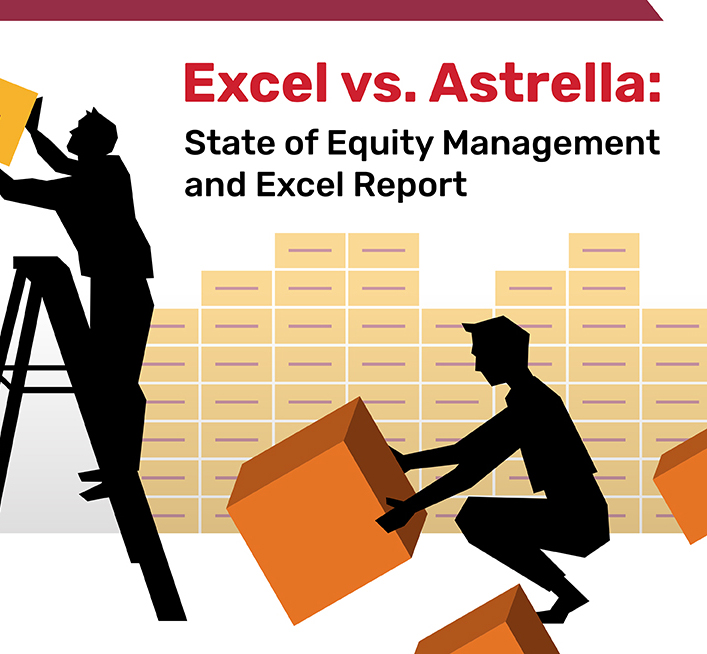Mergers and acquisitions (M&A) are complex transactions that can significantly impact the companies involved. One of the critical factors to consider in any M&A transaction is the use of equity. Equity can be used to finance the acquisition, to provide incentives to the target company’s management and employees, and to create a new ownership structure for the combined company. In this blog post, we will discuss the different types of equity that can be used in M&A transactions, the advantages and disadvantages of leveraging equity, and provide examples of how equity has been used in M&A transactions.
What Equity Means in the Context of Mergers and Acquisitions
Equity, in a business context, represents an ownership interest in a company. When a company issues equity, it sells a portion of its ownership to investors in exchange for capital. This capital can fund the company’s operations, growth, or expansion. In the context of mergers and acquisitions (M&A), equity plays a crucial role in facilitating these complex transactions and shaping the financial structure and ownership of the combined entity.
In M&A transactions, equity can be used as a form of payment to the acquired company’s shareholders. Instead of paying cash or other assets, the acquiring company may issue its shares of stock to the target company’s shareholders. This allows the acquired company’s shareholders to retain a stake in the combined entity and potentially benefit from its future growth and success.
Additionally, equity can be used as an incentive for employees and management of the acquired company to remain with the organization after the acquisition. By offering equity-based compensation, such as stock options or restricted stock units, the acquiring company can align the interests of these key individuals with the long-term success of the combined entity and motivate them to contribute their expertise and experience to the integration process.
The use of equity in M&A transactions can significantly impact the financial structure and ownership of the combined company. It can affect the company’s capital structure, dilution of existing shareholders’ ownership, and voting rights, among other factors. Therefore, careful consideration and planning are essential to ensure that the use of equity aligns with the acquiring and acquired companies’ strategic objectives and financial goals.
Types of Equity in Mergers and Acquisitions
In mergers and acquisitions, various types of equity serve as instrumental tools in structuring transactions and aligning the parties’ interests. One such type is common stock, which represents the fundamental ownership stake in a company. Common shareholders enjoy voting rights on corporate matters, receive dividends if declared, and partake in the company’s financial triumphs and tribulations. In M&A transactions, common stock frequently serves as the consideration offered to the acquired company’s shareholders, effectively granting them a stake in the newly formed entity.
Another notable form of equity is preferred stock, a hybrid security blending characteristics of both stocks and bonds. Preferred shareholders are usually entitled to fixed dividends and hold precedence over common shareholders in claiming the company’s assets in instances of bankruptcy or liquidation. M&A transactions often utilize preferred stock to provide investors a higher income stream and enhanced protection than common stock while retaining certain ownership rights.
For investors seeking a blend of potential capital appreciation and the security features of preferred stock, convertible preferred stock emerges as an attractive option. This type of preferred stock can be converted into a predefined number of common shares at the holder’s discretion. In M&A transactions, convertible preferred stock allows investors to capitalize on potential growth while benefiting from the safety net provided by preferred stock.
The selection of the appropriate equity type in an M&A transaction hinge on many factors, including the financial aspirations of the parties involved, the desired ownership structure, and the potential tax implications. Each equity type carries its advantages and drawbacks, necessitating a tailored approach to determine the optimal structure for each transaction.
Advantages of Leveraging Equity in Mergers and Acquisitions
Leveraging equity in mergers and acquisitions can provide several advantages for the acquiring company. One key advantage is its cost-effectiveness. Equity can be used as a form of payment to the acquired company’s shareholders, allowing the acquiring company to conserve cash resources. This can be particularly beneficial when the acquiring company has limited access to cash or credit or wants to avoid taking on additional debt.
Another advantage of using equity in M&A transactions is its flexibility. Equity can be structured in various ways to meet the specific needs and objectives of the parties involved. For example, preferred stock can provide investors with a fixed income stream, while common stock can offer the potential for capital appreciation. This flexibility allows the acquiring company to tailor the equity offering to different investor groups’ preferences and risk tolerance.
Furthermore, leveraging equity in M&A transactions can help align the interests of the acquiring company and the management team of the acquired company. By offering equity incentives to key employees, the acquiring company can motivate them to remain with the organization and contribute to its success. This can help ensure a smooth transition and integration process and promote a sense of ownership and commitment among the acquired company’s employees.
Finally, using equity in M&A transactions can help create a broader ownership base for the combined company. This can be beneficial for several reasons. A broader ownership base can help distribute risk and reduce ownership concentration, enhancing corporate governance and accountability. It can also facilitate future fundraising efforts, as the acquiring company may be able to tap into a larger pool of investors.
Disadvantages of Leveraging Equity in Mergers and Acquisitions
Leveraging equity in mergers and acquisitions can entail certain drawbacks that demand careful consideration before deciding. One such disadvantage is the dilution of existing shareholders’ ownership. When new shares are issued as acquisition currency, the ownership percentage of current shareholders may diminish, potentially impacting their voting rights and dividend payouts. This dilution can breed discontent among existing shareholders and necessitates prudent management to safeguard their interests.
Another potential pitfall of utilizing equity in M&A transactions is the elevated cost of capital. Issuing new shares expands the total number of outstanding shares, leading to a potentially higher cost of capital for the merged entity. This arises from the obligation to pay dividends to a more extensive shareholder base, which can adversely affect the company’s profitability and financial flexibility.
Moreover, leveraging equity in M&A transactions harbors the risk of relinquishing control to the acquiring company. When a substantial portion of the acquired company’s ownership is transferred via equity, the acquiring company may have diminished control over decision-making and strategic direction. This poses a particular concern if the acquiring company seeks comprehensive control and integration of the acquired business.
Lastly, M&A transactions involving equity can be intricate and time-consuming endeavors. Negotiating the terms of the equity issuance, encompassing the number of shares, valuation, and voting rights, demands meticulous attention to detail and may necessitate extensive legal and financial expertise. This complexity can prolong the transaction’s completion timeline and escalate costs.
Examples of Equity Use in Mergers and Acquisitions
This section provides examples of how equity has been used in M&A transactions. It includes five examples, from 2015 to 2023, of companies that used equity to finance their acquisitions.
- In 2015, Dell acquired EMC Corporation in a $67 billion deal. Dell used a combination of cash and stock to finance the acquisition, with EMC shareholders receiving a mix of cash and Dell stock. The deal was a tax-free exchange, meaning EMC shareholders did not have to pay taxes on the sale proceeds.
- In 2016, AT&T acquired Time Warner in a $85 billion deal. AT&T used a combination of cash and stock to finance the acquisition, with Time Warner shareholders receiving a mix of cash and AT&T stock. The deal was structured as a tax-free exchange, meaning that Time Warner shareholders did not have to pay taxes on the sale proceeds.
- In 2017, The Walt Disney Company acquired 21st Century Fox in a $71.3 billion deal. Disney used a combination of cash and stock to finance the acquisition, with 21st Century Fox shareholders receiving a mix of cash and Disney stock. The deal was a tax-free exchange, meaning that 21st Century Fox shareholders did not have to pay taxes on the sale proceeds.
- In 2018, CVS Health acquired Aetna in a $69 billion deal. CVS Health used a combination of cash and stock to finance the acquisition, with Aetna shareholders receiving a mix of money and CVS Health stock. The deal was a tax-free exchange, meaning Aetna shareholders did not have to pay taxes on the sale proceeds.
- In 2023, Microsoft acquired Activision Blizzard in a $68.7 billion deal. Microsoft used a combination of cash and stock to finance the acquisition, with Activision Blizzard shareholders receiving a mix of cash and Microsoft stock. The deal was a tax-free exchange, meaning that Activision Blizzard shareholders did not have to pay taxes on the sale proceeds.
Conclusion
Leveraging equity in mergers and acquisitions can be a strategic move, but it requires careful consideration of the advantages and disadvantages. The type of equity used, the valuation of the companies involved, and the specific goals of the transaction all play a role in determining the success of an equity-based M&A. It is essential to seek professional advice and conduct thorough due diligence to ensure that an equity-based M&A aligns with the parties’ long-term objectives and risk tolerance.
By carefully structuring the equity components and considering the potential impact on ownership, control, and future decision-making, companies can leverage equity effectively to achieve their strategic objectives through mergers and acquisitions. This approach can provide flexibility, align interests, and create opportunities for growth and value creation for all stakeholders involved. However, it is crucial to approach equity-based M&A transactions with a well-defined strategy, robust financial analysis, and a commitment to transparent communication to ensure a successful outcome.

Tom Kirby
Tom Kirby serves as the Head of Global Sales at Astrella. With more than 20 years of experience in sales and business development, he is dedicated to fostering strong client relationships and assisting both private and public companies in understanding and effectively communicating their value.
- Tom Kirby#molongui-disabled-link
- Tom Kirby#molongui-disabled-link
- Tom Kirby#molongui-disabled-link
- Tom Kirby#molongui-disabled-link































































































































